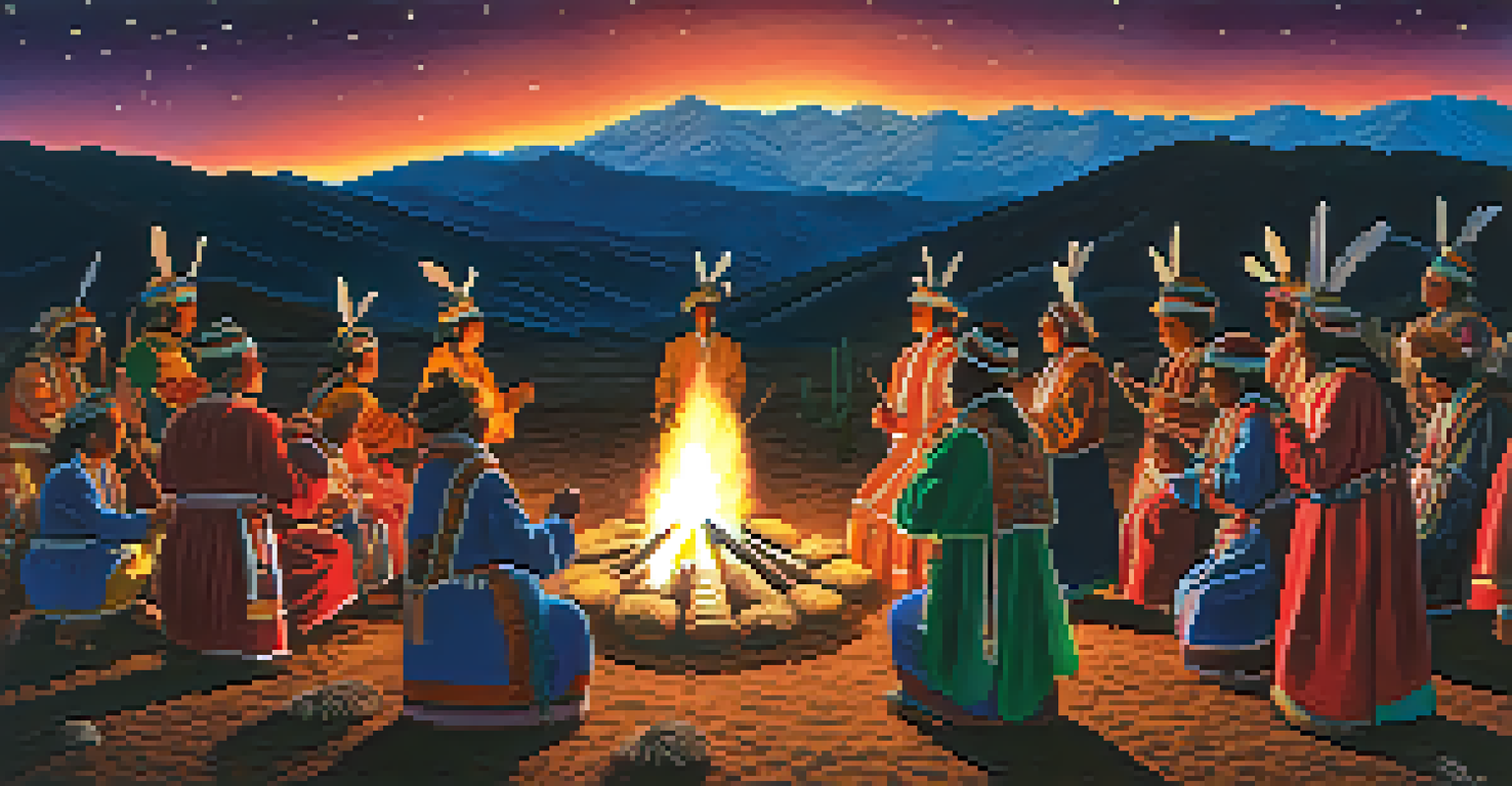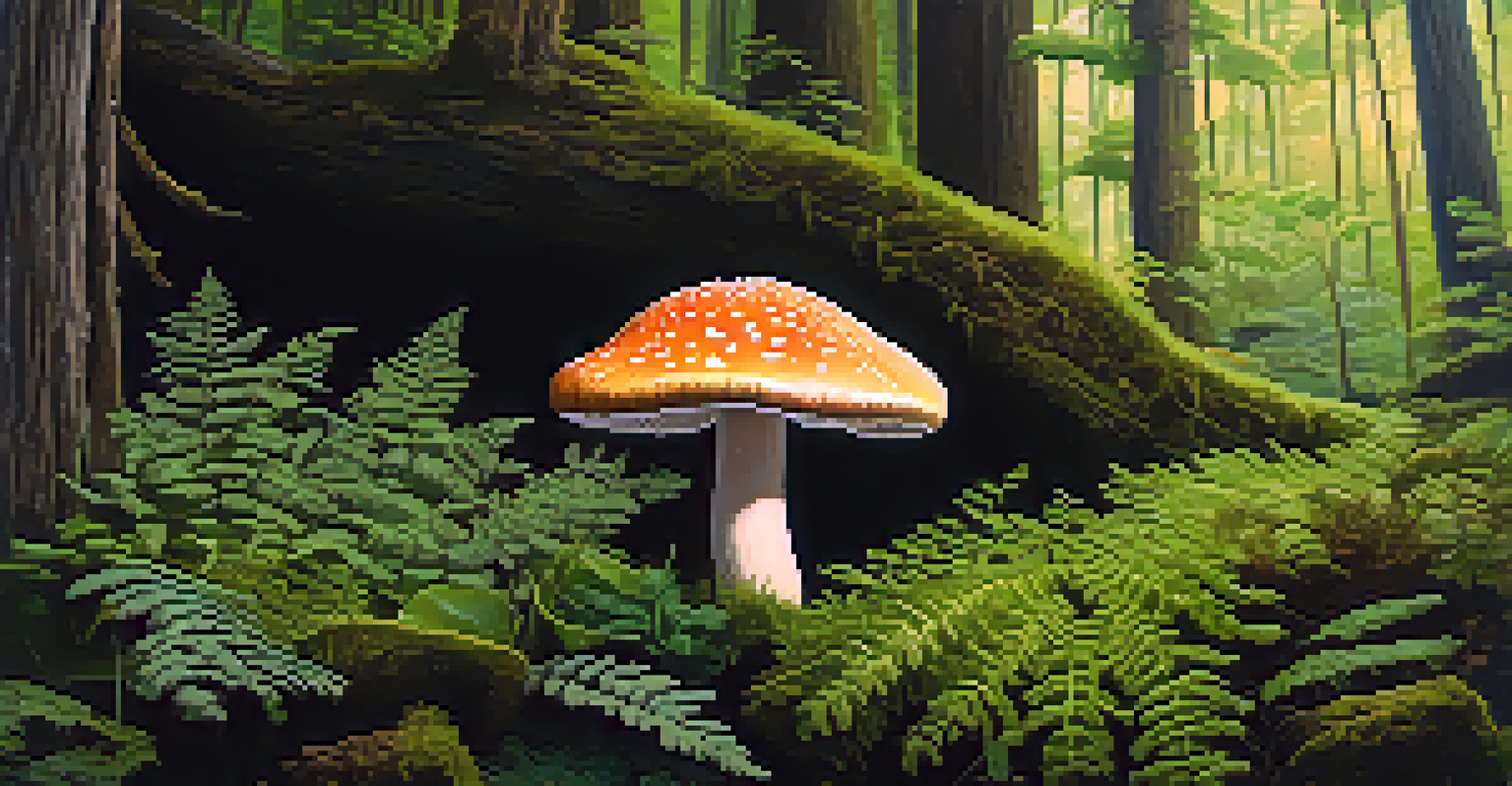Entheogens and Shamanism in Indigenous Ancient Cultures

Understanding Entheogens: Nature's Spiritual Catalysts
Entheogens are substances that induce altered states of consciousness, often used in spiritual or religious contexts. They come from various natural sources, like plants and fungi, and have been integral to many ancient cultures. For instance, indigenous peoples in the Amazon have long used ayahuasca, a brew made from local plants, to facilitate deep spiritual journeys.
Entheogens are a pathway to the divine, offering profound insights into the nature of consciousness and reality.
These substances often lead to profound experiences, allowing individuals to transcend ordinary reality and connect with a deeper sense of self or the universe. By understanding the role of entheogens, we can appreciate their significance in shamanistic practices. They serve not only as tools for healing but also as gateways to spiritual enlightenment.
Moreover, the term ‘entheogen’ itself means ‘generating the divine within,’ emphasizing their purpose in helping individuals tap into spiritual realms. By exploring these substances, we can uncover the rich tapestry of beliefs and practices in ancient cultures that sought to understand the mysteries of existence.
Shamanism: The Bridge Between Worlds
Shamanism is a spiritual practice found in many indigenous cultures, characterized by the shaman's role as a mediator between the physical and spiritual worlds. Shamans often utilize entheogens to facilitate communication with spirits, ancestors, and the divine. Their journeys can include rituals, chanting, and drumming, which help to elevate their consciousness.

In many cases, shamans are seen as healers, using their experiences to diagnose and treat ailments within their communities. This dual role of healer and spiritual guide underscores the importance of both the shaman and the entheogens in maintaining the balance of health and spirituality. The shaman's knowledge of plant medicine and spiritual practices is often passed down through generations, creating a rich cultural heritage.
Entheogens Facilitate Spiritual Journeys
These substances help individuals transcend ordinary reality, connecting them with deeper spiritual insights.
The act of journeying with entheogens allows shamans to access wisdom and guidance that transcends ordinary understanding. This connection to the spiritual world is a vital aspect of shamanistic traditions, providing insights that can aid in healing and decision-making within the community.
The Cultural Significance of Entheogens
In many ancient cultures, entheogens were not merely substances; they were seen as sacred gifts from the earth. Their use was often intertwined with cultural rituals, ceremonies, and community gatherings. For example, in Mesoamerica, the use of psilocybin mushrooms and peyote was central to religious practices, deepening the community's connection to the divine.
Shamanism is the ancient art of healing and guidance, where the shaman becomes a bridge between the worlds of spirit and matter.
These substances were often regarded as teachers, guiding individuals through personal and communal transformations. The experiences induced by entheogens could lead to a renewed sense of purpose and understanding of one's role within the community. Thus, they played a crucial role in shaping cultural identity and spiritual beliefs.
Moreover, the reverence for entheogens often reflects a deeper understanding of nature and the interconnectedness of all beings. This respect for the natural world has been a cornerstone of many indigenous cultures, fostering a sense of responsibility toward the environment and promoting sustainable practices.
Rituals and Practices Involving Entheogens
Rituals involving entheogens are often elaborate and deeply symbolic, reflecting the cultural values and beliefs of the community. These ceremonies typically include various elements such as music, dance, and communal participation. For example, in the Andes, the San Pedro cactus is used in rituals that promote healing and insight, often accompanied by traditional music and dance.
The preparation and consumption of entheogens is usually guided by an experienced shaman who ensures that the process is sacred and safe. This careful guidance helps participants navigate their experiences, allowing them to derive meaning and healing from their journeys. The communal aspect of these rituals reinforces social bonds and collective identity.
Shamanism Connects Worlds for Healing
Shamans use entheogens as tools to mediate between physical and spiritual realms, aiding in healing and community guidance.
During these ceremonies, participants often report profound insights, emotional healing, and a sense of unity with the universe. Such experiences not only impact the individual but also resonate throughout the community, promoting a shared understanding of their spiritual journey.
Entheogens and Healing in Indigenous Cultures
Healing practices in many indigenous cultures often incorporate entheogens as vital components. These substances are believed to address not only physical ailments but also emotional and spiritual distress. For instance, ayahuasca ceremonies in the Amazon are known for their therapeutic effects, helping individuals confront trauma and find inner peace.
The healing process during these ceremonies is holistic, addressing the mind, body, and spirit. Participants often share their experiences, fostering a supportive environment that encourages healing. This communal sharing is a testament to the interconnectedness that is a hallmark of many indigenous cultures.
Furthermore, the integration of entheogens into healing practices reflects a deep understanding of the human experience, emphasizing the need for both individual and collective healing. This approach has gained attention in modern therapeutic settings, highlighting the potential benefits of these ancient practices in contemporary mental health care.
Modern Perspectives on Ancient Practices
Today, there is a growing interest in the study and application of entheogens within modern therapeutic contexts. Many researchers and therapists are exploring the potential benefits of these substances for treating various mental health issues, such as depression, anxiety, and PTSD. This resurgence in interest echoes ancient practices, where entheogens were used for healing and spiritual exploration.
However, this modern exploration must be approached with respect and understanding of the cultural significance behind these substances. It's crucial to recognize that these practices are rooted in centuries of tradition and should not be commodified or disconnected from their origins. As we delve into these ancient wisdoms, we must honor the indigenous knowledge that has preserved these practices.
Cultural Importance of Entheogens
In many ancient cultures, entheogens were sacred gifts, integral to rituals that shaped spiritual beliefs and cultural identity.
Moreover, the increasing popularity of entheogens raises important ethical questions about accessibility and representation. Ensuring that indigenous voices are included in this conversation is vital to maintaining the integrity of these ancient practices while exploring their relevance in a contemporary context.
The Future of Entheogens and Shamanism
The future of entheogens and shamanism in both indigenous cultures and modern contexts is an exciting yet complex landscape. As scientific research continues to validate the therapeutic benefits of these substances, there may be a paradigm shift in how society views mental health and spiritual well-being. This shift could lead to a greater acceptance of alternative healing practices that integrate ancient wisdom with modern science.
However, this evolution must be approached thoughtfully, ensuring that the cultural heritage of shamanism is preserved and respected. Engaging with indigenous communities and their knowledge is crucial in navigating this path forward. By fostering collaboration, we can create a future that honors the past while embracing new possibilities.

Ultimately, the journey of entheogens and shamanism reflects our ongoing quest for understanding and connection. As we explore these ancient practices, we are reminded of the profound wisdom that lies within nature and the human spirit, inviting us to reconnect with ourselves and the world around us.